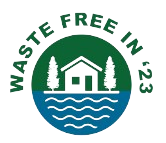Introduction
Wastewater treatment is essential for protecting the environment, but conventional treatment plants can be expensive and require a lot of energy. This study explores a natural solution using duckweed, a fast-growing aquatic plant that absorbs nutrients from wastewater while producing valuable biomass. Researchers compared duckweed and water hyacinth to determine which plant is more effective at cleaning wastewater and producing useful byproducts.
Their findings suggest that duckweed is the better choice because it removes pollutants efficiently while generating high-quality biomass that can be used for animal feed, bioenergy, and even medicine.
How Duckweed Cleans Wastewater
Duckweed acts like a sponge, soaking up excess nutrients such as nitrogen (N) and phosphorus (P) from wastewater. These nutrients, if left untreated, can cause water pollution, algae blooms, and harm aquatic life. By growing on the water’s surface, duckweed:
- Absorbs nitrogen and phosphorus from wastewater, preventing pollution.
- Provides oxygen to the water, improving water quality.
- Grows rapidly, making it an efficient option for large-scale treatment.
The study compared duckweed with water hyacinth, another plant known for its ability to clean wastewater, to see which one worked better.
Key Findings: Economic & Environmental Benefits
1. Duckweed is More Effective for Wastewater Treatment
- Duckweed removed nutrients faster and more efficiently than water hyacinth.
- It performed better in both warm and cool temperatures, making it suitable for year-round use.
- Duckweed-covered water had higher oxygen levels, improving overall water quality.
2. Producing Valuable Biomass for Animal Feed and Bioenergy
- Duckweed biomass contained high levels of protein, starch, and useful compounds, making it valuable for multiple industries.
- The protein content (up to 45%) makes duckweed a great alternative to expensive soybean meal in animal feed.
- Duckweed starch can be used for biofuel production, creating a renewable energy source.
- It also contains antioxidants and flavonoids, which have potential medicinal benefits.
3. Faster Growth Means Higher Productivity
- Duckweed grows twice as fast as water hyacinth, meaning more biomass can be harvested in less time.
- This makes duckweed cheaper and more efficient for large-scale wastewater treatment.
4. Environmental Sustainability & Climate Benefits
- Duckweed absorbs CO₂ from the air, reducing greenhouse gas emissions.
- It reduces the need for chemical fertilizers by naturally recycling nutrients.
- Unlike water hyacinth, duckweed does not spread uncontrollably, making it easier to manage.
Challenges and Considerations
- Duckweed farms require careful management to prevent excessive growth.
- Harvesting large amounts efficiently is still a challenge, requiring better technology for scaling up production.
- While duckweed biomass is promising, more research is needed to improve biofuel extraction methods.
Conclusion: A Cost-Effective, Eco-Friendly Solution
This study shows that duckweed is an effective and sustainable way to clean wastewater while producing valuable biomass. Compared to water hyacinth, it grows faster, removes more pollutants, and creates high-quality protein for animal feed and bioenergy production.
With proper investment and scaling, duckweed farming could help cities and industries treat wastewater naturally, reduce environmental pollution, and provide affordable renewable resources for farmers and energy producers.
Read the Full Study:
Zhao, X., Xie, H., Zhang, S., Wang, H., & Liu, G. (2014). Potential of Duckweed in the Conversion of Wastewater Nutrients to Valuable Biomass: A Pilot-Scale Comparison with Water Hyacinth. Bioresource Technology. https://doi.org/10.1016/j.biortech.2014.04.018
Got questions?
